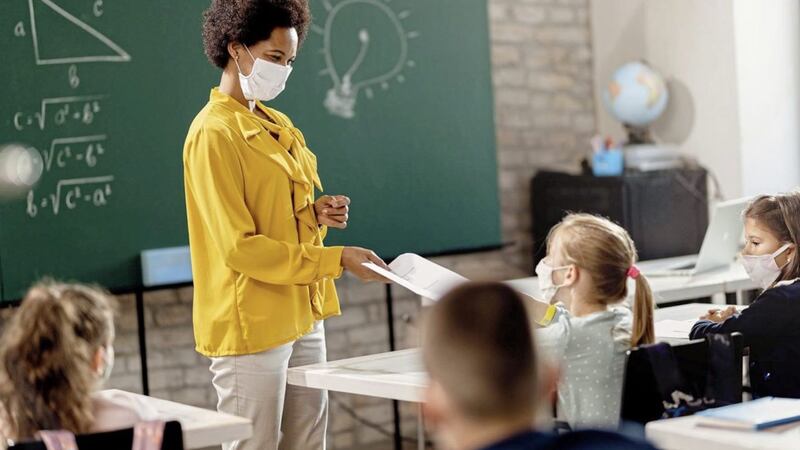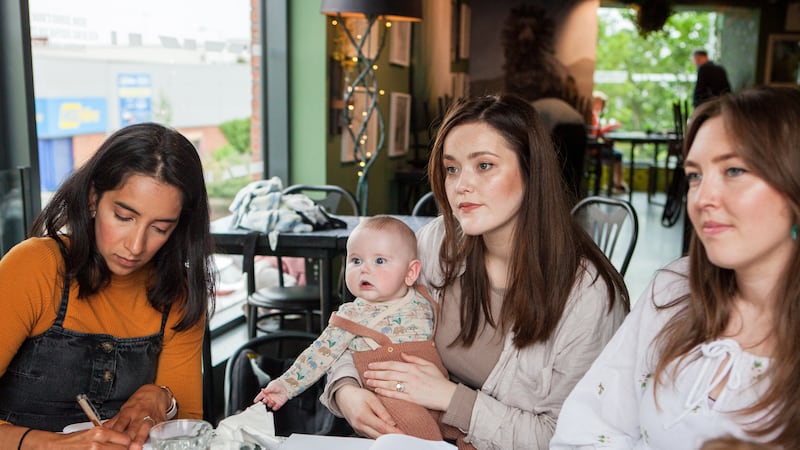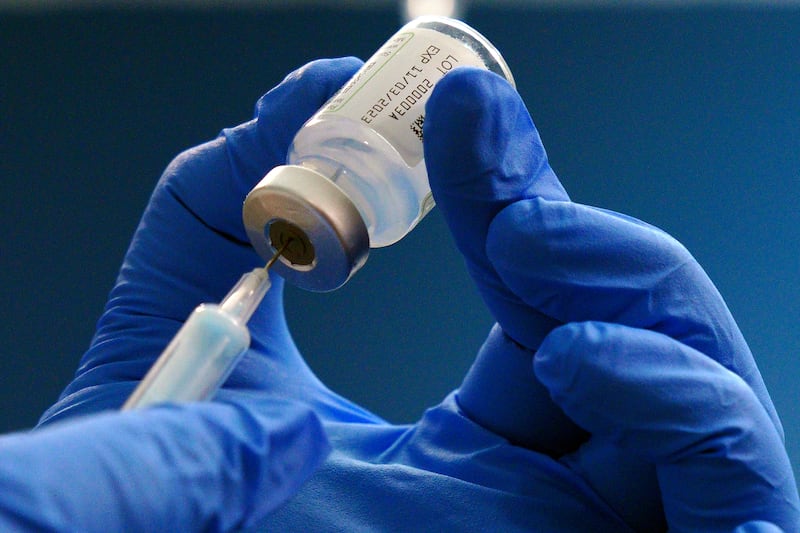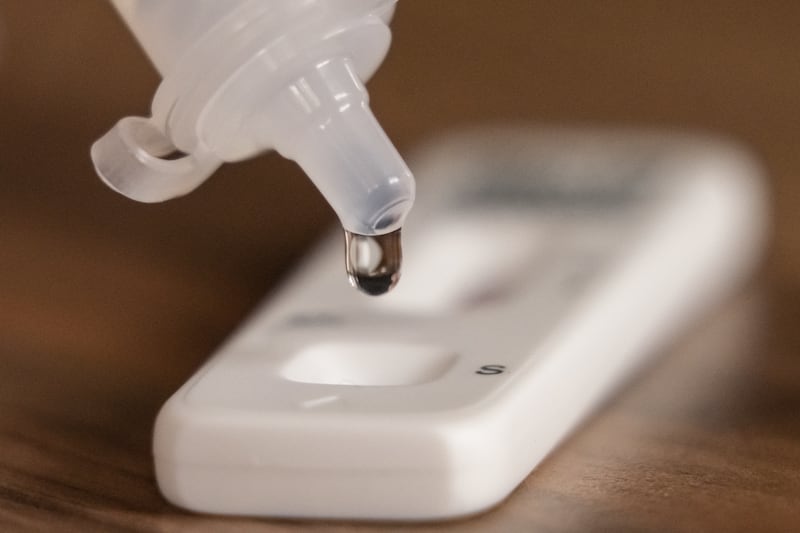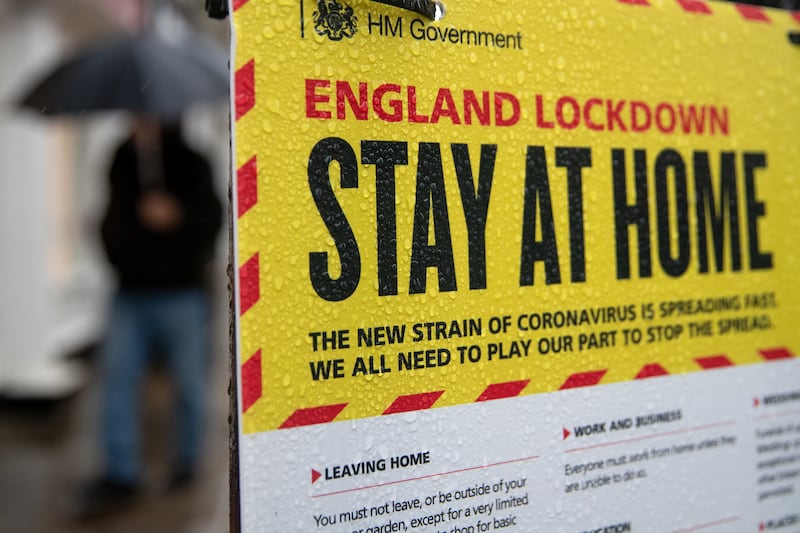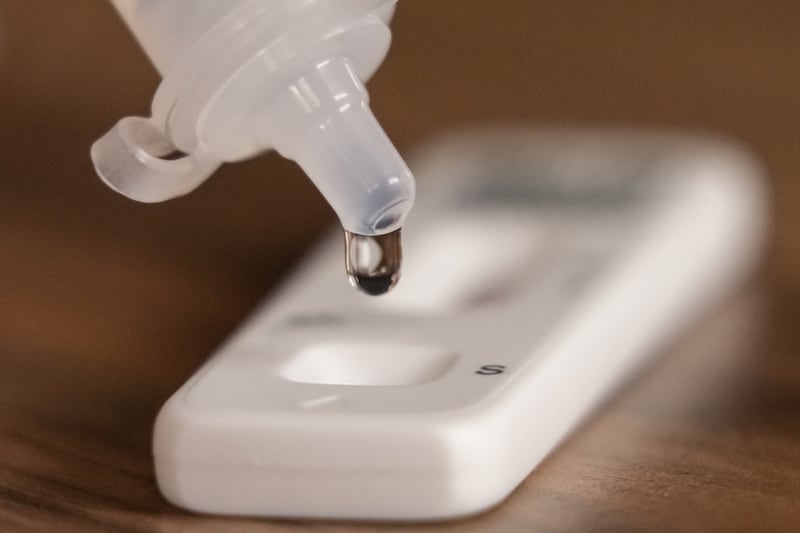A union has said it will resist any attempt to require teachers providing in-school supervision to simultaneously lead remote learning tasks.
Teachers have been told they must deliver different activities to a variety of age groups and across a wide ability range on-site.
Updated guidance from the Department of Education has caused some upset among classroom staff.
It includes developments on several Covid-related issues for schools including the wearing of face coverings, vaccinations and transport.
Sections on bubbles/social distancing and remote learning have caused annoyance and confusion, however.
The north has shut its schools for the third time - one of the only regions in Europe to have closed as often.
Only vulnerable pupils and the children of key workers are attending until the February half-term break.
All other young people are learning remotely from home.
The department said while the number of pupils within settings was reduced, schools should continue to limit interaction and contact.
New bubbles may be formed in line with PHA advice, but these should not exceed normal class sizes.
With smaller numbers, the department said, it was acceptable to use a single room, provided that the two-metre social distancing rule could be maintained between pupils, and staff could maintain this when supervising the class.
Principals told The Irish News that the numbers attending in the first week of term were significantly higher than during the first lockdown.
They said this was making it "impossible" to provide two-metre social distancing.
There were more than 100 children attending some schools last week.
Teachers also said they were initially told they would simply provide supervision to children attending. The updated guidance said on-site teaching and learning was required.
"The department expects that vulnerable and key worker children who are attending school will engage with the same remote education tasks and lessons provided to their peers who are learning at home and in this way continue to receive high quality teaching and learning through remote education," the guidance said.
"It is expected that teaching and/or non-teaching staff will supervise and support vulnerable and key worker children in engaging with the remote learning tasks and activities provided to all pupils.
"This will include providing appropriate, support, explanations and directions in regard to the remote learning materials."
It added that schools should differentiate teaching and learning activities in accordance with the age, ability, aptitude and special educational needs of all pupils.
The INTO union said it was not possible, not could it be expected, to provide both on-site and remote learning at the same time.
Senior official Tommy McGlone said schools would have a rota of teachers available for face-to-face supervised learning. Teachers not on the rota, and working from home, would provide differentiated remote learning activities.
"This guidance gives clarity to the fact that children attending school can access these remote lessons in the same manner as children who are not in school and are learning from home," he said.
"The teaching and non-teaching staff who are in school will not be directly teaching but will be offering direction and support to the attending children engaged in differentiated remote learning tasks.
"INTO will resist any attempt to require its teachers, engaged in supervising learning with children in a face-to-face setting, to simultaneously provide remote learning tasks to pupils learning from home."
